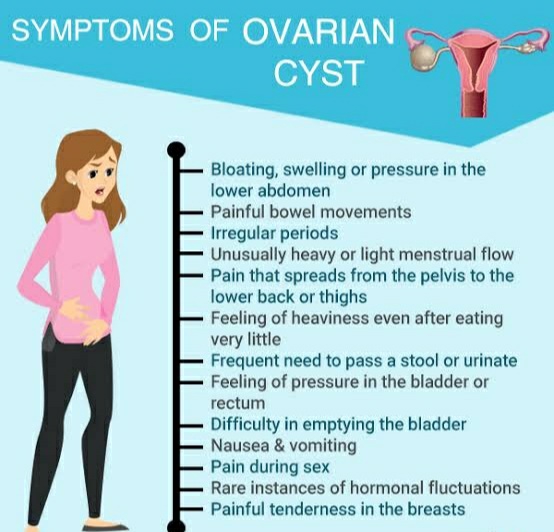आयुष्मान कार्ड के द्वारा आपरेशन इत्यादि एवं डायलिसिसि की सुविधा उपलब्ध है।
Ovarian Cysts
Ovarian cysts that are smaller in nature would always tend to be asymptomatic; however larger cysts are liable for the symptoms like
● Aching abdomen
● Bloating and indigestion
● Lower back pain
● Inconsistent menstrual periods
● Nausea and vomiting
● Considerable pain during sexual intercourse
● Pain in the lower right or left quadrant of the abdomen
Ovarian cysts are the tiny fluid-filled sacs, which would be formulated in the ovaries. Some of them would be harmless, but certain things might be perilous, as they possess the tendency to rupture and bleed, which would be extremely painful.
During pregnancy the habitual type of ovarian cysts which affects are functional ovarian cysts, which are being discovered in the first trimester. Ovarian cysts during pregnancy would always get resolved on their own before the child birth.
Resounding No! Not all types of ovarian cysts occur due to cancer, and having an ovarian cyst does not cause ovarian cancer. However, certain types of ovarian cancers instigate cystic areas inside the tumor. In comparison with ovarian cancer, ovarian cysts would be always little common in nature.
Follicle cysts : Follicular cysts carry a follicle that has failed to break and filled with more fluid.
Corpus luteum cysts : Corpus luteum cysts occur when the follicle ruptures to release the egg, but bolts up and swells with fluid. These cysts would be extremely painful, which induces profuse bleeding. When bleeding occurs in a functional cyst, it’s being termed as a hemorrhagic cyst.
Some types of ovarian cysts can be tagged with endometriosis, polycystic ovarian syndrome (POS) and other conditions. Polycystic ovaries arise, when the ovaries are extremely larger in nature, which contain multiple tiny cysts on the outer edges. Non-cancerous growths which originates from the outer lining tissue of the ovaries (cystadenomas), certain cysts would also develop, when the uterine lining tissue grows outside the uterus and adheres to the ovaries (endometrioma).
The aforementioned factors would also enhance the risk of developing ovarian cysts : Obesity, Polycystic ovarian syndrome, Endometriosis, Early menstruation, Infertility.
For ovarian cysts, various methods have been provided , which let the doctors in up-helding the presence of ovarian cysts, which include:
Pelvic and Transvaginal Ultrasound
A pelvic examination can detect the presence of ovarian cysts. A pelvis ultrasound would lend a helping hand to the doctor in determining the nature of the cyst.
A transvaginal ultrasound has been carried out by inserting a probe into the vagina to examine the uterus and ovaries. This examination permits the doctor to examine the cyst in a more precise manner.
